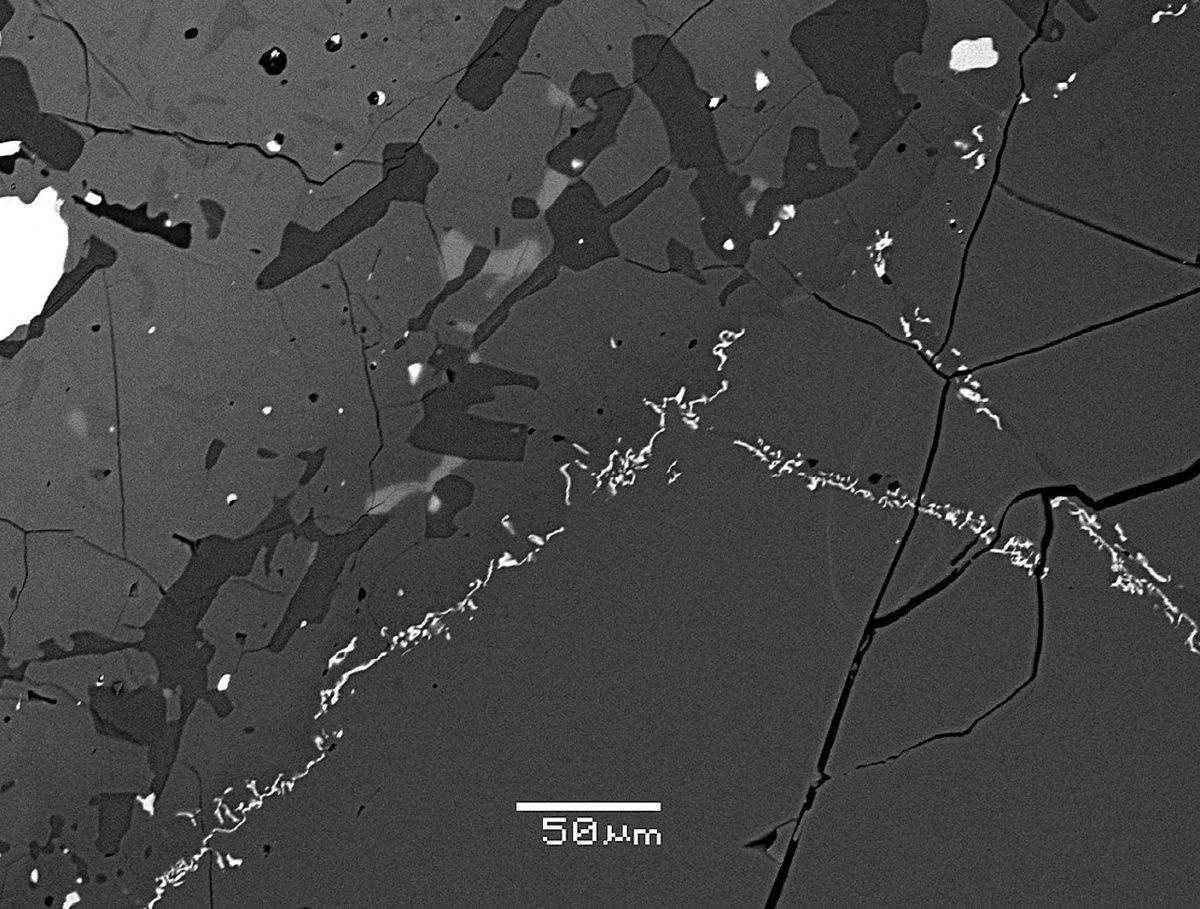
Merrillite is a fascinating mineral that has captured the interest of scientists and space enthusiasts alike. Found in meteorites, lunar rocks, and Martian samples, this phosphate mineral plays a crucial role in understanding the history of our solar system. But what makes Merrillite so special? For starters, it’s a key indicator of extraterrestrial origins, helping researchers trace the journey of celestial bodies. Additionally, its unique composition offers clues about the conditions and processes that shaped planets and moons. Whether you’re a budding geologist or just curious about space, these 30 facts about Merrillite will shed light on its significance and mysteries.
Key Takeaways:
- Merrillite is a rare mineral found in meteorites from the Moon and Mars. Studying it helps scientists understand the history and conditions of our solar system's formation.
- Merrillite's composition and structure provide valuable insights into the presence of water and the evolution of planetary bodies. Its unique properties make it a fascinating subject for scientific exploration.
What is Merrillite?
Merrillite is a fascinating mineral often found in meteorites. Its unique properties and origins make it a subject of interest for scientists and enthusiasts alike. Here are some intriguing facts about this mineral.
-
Merrillite is a phosphate mineral, primarily composed of calcium, magnesium, and iron.
-
It was named after George P. Merrill, an American geologist and curator at the Smithsonian Institution.
-
This mineral is commonly found in meteorites, particularly in lunar and Martian meteorites.
-
Merrillite is often associated with other phosphate minerals like whitlockite.
-
It has a hexagonal crystal system, which means its crystals form in a hexagonal shape.
-
The mineral is typically colorless or white, but impurities can give it a yellowish or brownish hue.
Where is Merrillite Found?
Merrillite's extraterrestrial origins make it a rare and exciting find. Its presence in various types of meteorites provides valuable insights into the history of our solar system.
-
It is primarily found in meteorites that originate from the Moon and Mars.
-
Lunar meteorites containing merrillite offer clues about the Moon's geological history.
-
Martian meteorites with merrillite help scientists understand the Red Planet's past.
-
It has also been discovered in some Earth-based rocks, though this is much rarer.
-
The mineral is often found in association with other extraterrestrial minerals like olivine and pyroxene.
Why is Merrillite Important?
Merrillite's significance extends beyond its rarity. Its presence in meteorites provides crucial information about the processes that shaped our solar system.
-
Studying merrillite helps scientists understand the conditions under which meteorites formed.
-
It provides insights into the thermal history of meteorites, revealing the temperatures they experienced.
-
The mineral's composition can indicate the presence of water in the parent body of the meteorite.
-
Merrillite's structure can offer clues about the shock events that meteorites underwent during their journey through space.
-
It helps researchers determine the age of meteorites through radiometric dating techniques.
How is Merrillite Analyzed?
Analyzing merrillite requires advanced techniques and equipment. Scientists use various methods to study its composition and structure.
-
Electron microprobe analysis is commonly used to determine the mineral's chemical composition.
-
X-ray diffraction helps identify the crystal structure of merrillite.
-
Raman spectroscopy is used to study the vibrational modes of the mineral's molecules.
-
Scanning electron microscopy provides detailed images of merrillite's surface and morphology.
-
Isotope analysis can reveal information about the mineral's formation and history.
Interesting Facts About Merrillite
Merrillite's unique properties and origins make it a subject of endless fascination. Here are some more interesting facts about this mineral.
-
It is considered an anhydrous mineral, meaning it lacks water in its crystal structure.
-
Merrillite is often used as a proxy to study the presence of water in extraterrestrial environments.
-
The mineral's name was officially approved by the International Mineralogical Association in 1975.
-
It is sometimes confused with whitlockite, another phosphate mineral, but they have distinct differences.
-
Merrillite can form under high-pressure conditions, such as those found in impact craters.
-
The study of merrillite contributes to our understanding of planetary differentiation, the process by which a planet separates into different layers.
-
It has been found in some of the oldest known meteorites, dating back over 4.5 billion years.
-
Merrillite's presence in meteorites suggests that phosphate minerals were present in the early solar system.
-
The mineral's unique properties make it a valuable tool for studying the history and evolution of planetary bodies.
Merrillite's Intriguing World
Merrillite, a phosphate mineral found in meteorites, holds a treasure trove of information about our solar system's history. Its presence in lunar rocks and Martian meteorites provides clues about planetary formation and evolution. This mineral's unique composition, rich in calcium, sodium, and magnesium, makes it a key player in understanding extraterrestrial geology.
Scientists study Merrillite to uncover secrets about water's role in space. Its formation process hints at the conditions present on ancient celestial bodies. By analyzing Merrillite, researchers can piece together the puzzle of our cosmic neighborhood.
In short, Merrillite isn't just a rock; it's a window into the past. Its study helps us grasp the complexities of planetary science and the mysteries of our universe. So next time you hear about a meteorite, remember the hidden stories within its Merrillite.
Frequently Asked Questions
Was this page helpful?
Our commitment to delivering trustworthy and engaging content is at the heart of what we do. Each fact on our site is contributed by real users like you, bringing a wealth of diverse insights and information. To ensure the highest standards of accuracy and reliability, our dedicated editors meticulously review each submission. This process guarantees that the facts we share are not only fascinating but also credible. Trust in our commitment to quality and authenticity as you explore and learn with us.
